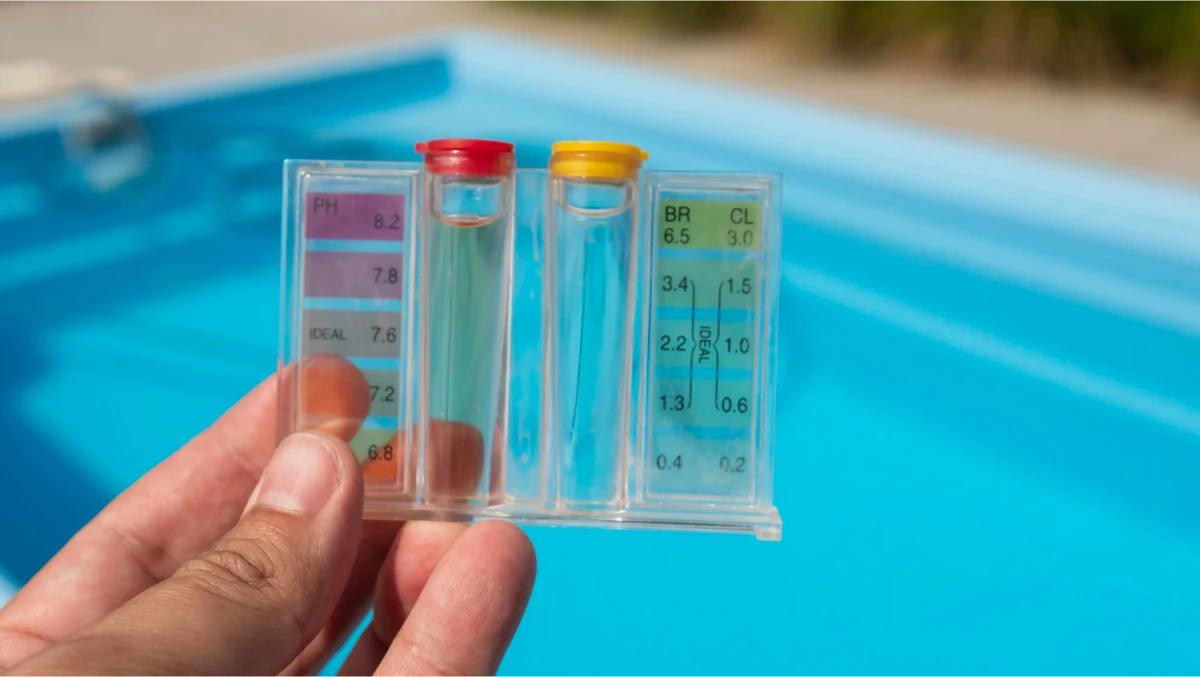Pool pH Basics
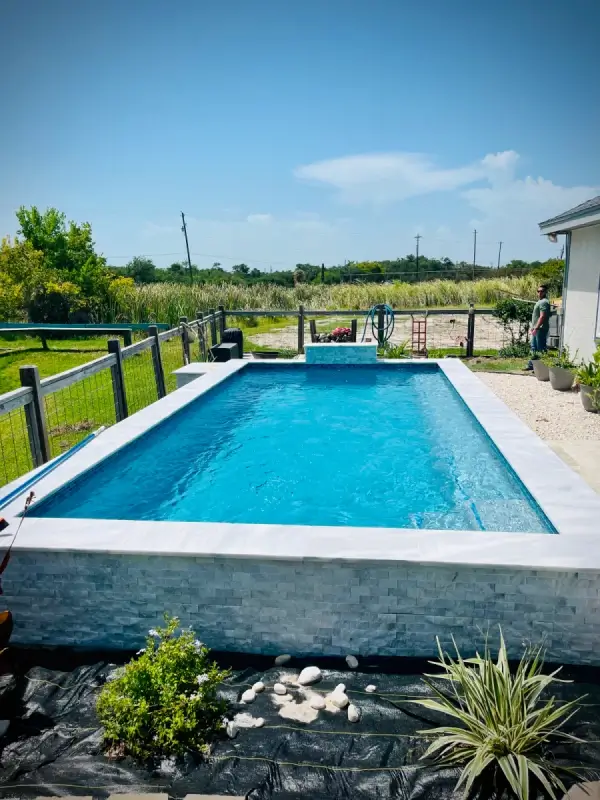
What is pH and why it matters
Ideal pH levels for swimming pools
Effects of improper pH balance
Your pool faces several challenges when pH levels drift from the ideal range.
- Equipment Effects: Low pH can corrode metal components and damage pool surfaces. High pH creates clogs equipment.
- Swimmer Comfort: Both low and high pH levels can cause problems.
- Stinging eyes and nasal passages
- Dry, itchy skin
- Brittle hair
pH directly affects how well your chlorine works. Your chlorine becomes less effective at sanitizing water when pH rises too high. You’ll need more chemicals and money to maintain proper sanitation levels.
Important Tools for pH Testing
You need the right testing tools to get accurate pH readings for your pool. Our team at Poseidon Pools & Spas has seen how proper testing helps maintain your pool’s balance.
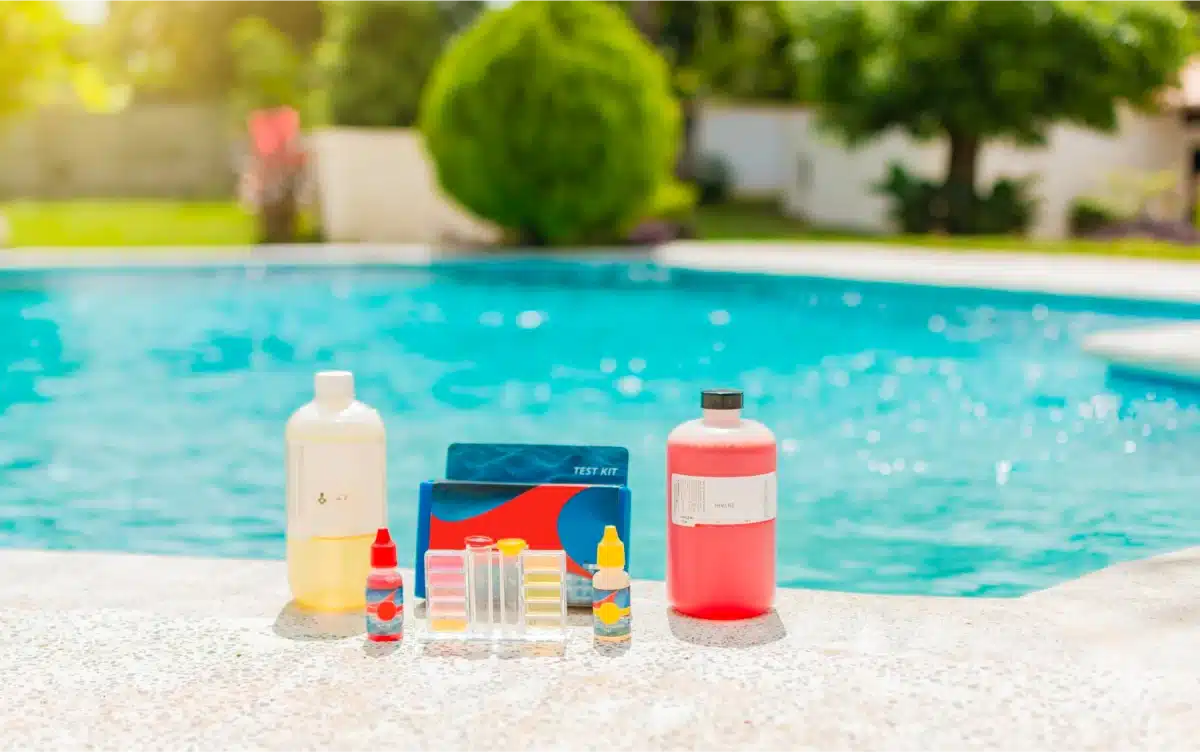
Different testing methods compared
You have three main options to test your pool’s pH levels. Each option comes with its own advantages!
Testing Method | Accuracy | Ease of Use | Cost |
Test Strips | Good | Very Easy | $ |
Liquid Test Kits | Better | Moderate | $$ |
Digital Meters | Best | Easy | $$$ |
How to choose the right testing kit
Pick a testing method that matches your needs. Test strips give quick results and work great for routine checks. Liquid test kits are more accurate and professionals use them often. These kits are perfect if you take pool maintenance seriously. Digital pH meters give the most precise readings but need regular calibration and proper care. Here are the key factors to think about when picking your testing equipment.
- Storage conditions (cool, dry place away from sunlight)
- Shelf life of testing materials
- Frequency of pool usage
- Budget constraints
Step-by-step testing process
Test your pool water at least every week during swimming season to get reliable results. Here’s how to get accurate readings.
- Collect your water sample from 18 inches below the surface
- Stay away from skimmer openings or return jets when sampling
- Follow your testing method’s specific instructions
- Test right after collection for best results
- Keep your testing supplies properly stored after use
Safe Methods to Raise Pool pH
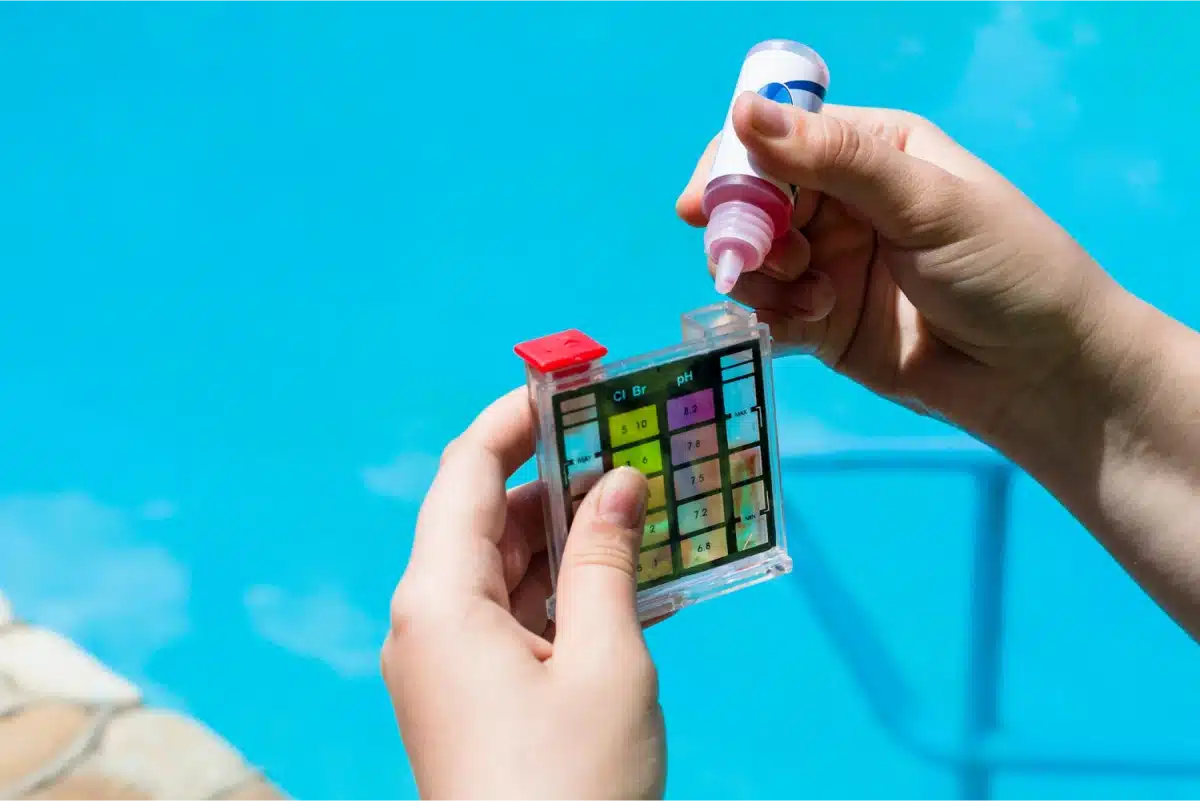
Using soda ash
- Pre-dissolve the soda ash in a bucket of pool water
- Distribute the solution around the pool’s perimeter
- Keep the pump running for proper circulation
- Wait 24-48 hours for any cloudiness to clear
Baking soda as an alternative
Natural aeration techniques
- Adjusting return jets to create surface agitation
- Running water features or fountains
- Operating pool features that create water movement
Common pH Problems and Solutions
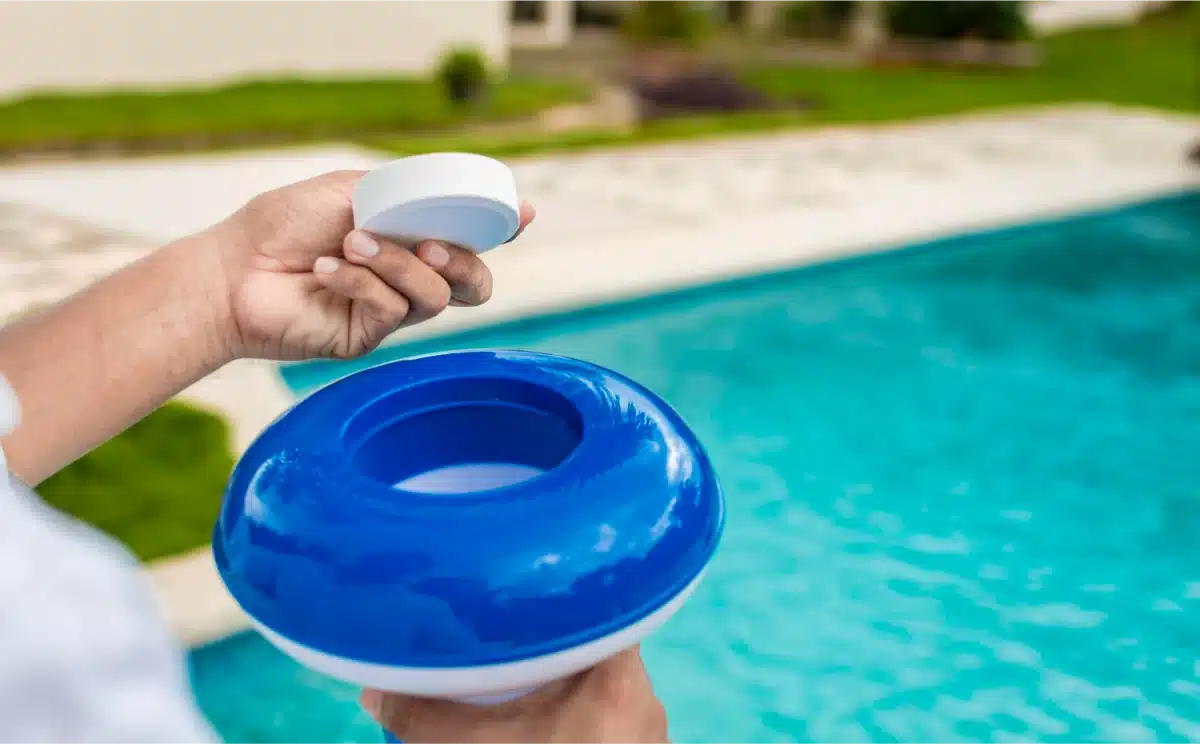
Identifying causes of low pH
- Acidic rainfall (typically pH 5.6, sometimes as low as 4.1)
- Heavy leaf debris and organic materials
- Dirt and mulch contamination
- Stagnant water conditions
Preventing pH fluctuations
When to seek professional help
- Chemical adjustments show no results after 24-48 hours
- Your pool has persistent cloudiness or scaling
- Your equipment shows signs of corrosion or damage
- You face complex filtration system issues

